Talent
Unveiling the Dual Role of Talent and Character in Shaping Success

Photo by Nik on Unsplash
In personal and professional growth, the saying “Talent sets the floor, character sets the ceiling” resonates profoundly with me. This phrase encapsulates a fundamental truth about the journey to success, where talent and character play pivotal roles, often determining an individual’s potential trajectory and ultimate reach.
The Foundation of Talent
Talent, in its essence, is the bedrock upon which skills and abilities are built. The innate aptitude gives one a starting advantage in any field. Whether it’s artistic ability, analytical thinking, or physical build, talent lays the groundwork for development. Consider the world of sports, where athletes like Michael Jordan, Usain Bolt, and Serena Williams have demonstrated exceptional natural abilities that set them apart from the beginning. In the arts, prodigies like Mozart exhibited extraordinary talent at a young age, setting the stage for legendary accomplishments.
However, talent alone is like an unfurnished apartment home – it provides the space but requires more to make it functional and beautiful. This is where character comes into play.
The Elevating Power of Character
Character refers to the mental and moral qualities distinctive to an individual. It encompasses traits such as perseverance, integrity, resilience, and humility. These attributes often become the defining factors in how far one’s talent can take them. Consider J.K. Rowling, whose perseverance through rejection catapulted her talent for storytelling into the global phenomenon of Harry Potter. Or think of Abraham Lincoln, whose integrity and resilience shaped the course of a nation.
Character shapes how one navigates challenges and failures. It’s the force that drives an individual to work tirelessly on their craft, to rise after each fall, and to learn from mistakes rather than be defeated by them. The journey to success is rarely a straight path; it’s fraught with obstacles and setbacks. Talent may initiate the journey, but character determines its course and final destination.
The Synergy of Talent and Character
The most compelling success stories often stem from the synergy of talent and character. Talent invites opportunities, but character ensures their maximization. In the corporate world, this synergy is evident in leaders like Satya Nadella, CEO of Microsoft, whose technical expertise (talent) combined with his empathetic leadership style (character) has driven the company’s resurgence.
The blend of the two has led to groundbreaking discoveries in scientific endeavors. Marie Curie’s intellectual brilliance (skill), persistence, and resilience (character) led to pioneering work in radioactivity despite the societal challenges she faced as a woman in science.
Nurturing Talent and Cultivating Character
Recognizing the importance, individuals and organizations must strive to nurture them. For talent, this means providing the right training, resources, and opportunities for growth. For character, it involves creating environments that encourage ethical behavior, resilience, and continuous learning.
This can mean a balanced focus on skill development and moral education in educational settings. In the corporate world, it might involve leadership training that emphasizes technical expertise, emotional intelligence, and ethical decision-making.
#TalentAndCharacter #SuccessJourney #PersonalGrowth #ProfessionalDevelopment #LeadershipQualities #Resilience #InnateAbility #MoralCharacter #AchievingSuccess #LifeLessons
Share this:
Comprehensive Team Member Onboarding Plan

Photo by Tim King on Unsplash
Onboarding new team members is a crucial part of the hiring process, as it sets the tone for their experience at the company and helps them integrate into the team. A comprehensive plan can ensure new hires understand their role, responsibilities, and the company’s culture, policies, and procedures. Allow me to share a framework:
Step 1: The first step in structuring an effective plan is to define the goals and objectives. The plan should have a clear purpose and align with the company’s overall goals and values. Some common objectives of an onboarding plan include introducing new team members to the company’s culture and values, familiarizing them with their job responsibilities, and helping them build relationships with their colleagues.
Step 2: Next, create a timeline. This will help ensure that all necessary steps are taken and that new hires clearly understand what to expect during their first few weeks on the job. The timeline should include key milestones, such as the first day of work, training sessions, and supervisor check-ins.
Step 3: Identifying the key players in the onboarding process is important. This includes HR team members, managers, and colleagues working closely with the new hire. Each individual should have a clearly defined role in the onboarding process.
Step 4: Training and orientation are two of the most important aspects of the onboarding process. New hires must know the company’s policies, procedures, and best practices. This can include training sessions, mentorship programs, and job shadowing opportunities.
Step 5: It’s important to communicate the company’s culture and values to new hires. This can include providing a handbook outlining the company’s mission, vision, and values. It can also include introducing them to key team members and sharing stories about the company’s history and culture.
Step 6: Onboarding is not a one-time event. It’s an ongoing process that requires ongoing support and feedback. Managers and colleagues should provide new hires with regular check-ins and feedback to ensure they adjust to their new roles and the company culture.
Share this:
Understanding the Four C’s of Human Resources

Photo by Tim Marshall on Unsplash
Human resource management is a crucial function in any organization. It involves managing the most important asset of the company – its team members. To manage this asset effectively, it is essential to understand the Four C’s of Human Resources – Compliance, Clarification, Culture, and Connection.
Compliance
Compliance is an essential component of human resources. It refers to the set of rules and regulations that an organization must follow to ensure that it operates within the legal framework. These are the non-negotiables. It includes various activities, such as ensuring that team members know their legal rights, keeping up-to-date with relevant laws and regulations, and ensuring the company complies with all relevant labor laws.
Compliance is critical because it helps to protect the company from legal disputes and financial penalties. It also helps to create a positive working environment where employees feel psychologically safe and valued.
Clarification
Clarification is the process of making sure that team members understand their roles and responsibilities within the organization. This includes clarifying job duties, performance expectations, and career growth opportunities.
Clear communication is essential in the clarification process. It involves setting expectations and goals and ensuring team members have the necessary resources and support to achieve them. Team members who understand their organizational role are more likely to be productive and motivated.
Culture
Culture refers to the shared values, beliefs, and practices that shape the behavior of an organization. It is a crucial component of human resources as it sets the tone for the workplace environment. A positive workplace culture can improve human engagement, motivation, and productivity.
To build a positive workplace culture, organizations should promote diversity and inclusion, encourage collaboration and teamwork, recognize and reward achievements, and promote a healthy work-life balance. This can be achieved through training, policies, and programs that support the organization’s culture.
Connection
Connection refers to the relationship between an organization and its team members. This includes providing people with opportunities for professional development, creating a supportive work environment, and encouraging open communication.
People who feel connected to their organization are likelier to be engaged, motivated, and committed to their work.
Share this:
The Next Big Thing in Multifamily
The War for Talent
Vilfredo had it right. Vilfredo Pareto that is.
His 80/20 rule is a measure that applies to just about anything including human workforce production.
Look around your apartment management organization – 20% of the people do 80% of the stuff.
Problem is that a war is breaking out and 80/20 won’t cut it.
Construction boom. Raising minimum wage. Skills gap. Caring.
All reasons for concerned over the next 36 months.
Opportunity
Now is the time to create your “why”. It’s time to craft a story and tell the reason “why” someone would entertain the idea of coming to work for you.
Make sure the story includes “how” coming to work for your organization will make a real difference in their personal/professional life.
Tell them how your organization is set in place to serve the people who serve it. Tell them your company’s purpose for being in business.
Help them see the path of progress and personal/professional advancement.
But – and here is the all important punchline – mean it. With the advent of the internet and the proliferation of information and devices to access it – B.S. has a stronger aroma than ever.
Facades don’t work.
The war for talent is real – are you ready to win it?
Your consistently thinking about ways to “move people” Multifamily Maniac,
M
Share this:
Distractions
There are distractions all around us. How easy is it to get lost in a status or tweet stream review? How easy is it to get caught up in a conversation that is not really moving your business forward? How easy is it to get into the busy and forget about the important stuff?
What do you spend your time on?
What is the first thing you do when you get up in the morning? If you are like most you grab the phone sitting beside your bed. Or you scramble to find it buried between the sheets because you fell asleep reading something.
Focus is fast becoming the number on asset of excellent knowledge age worker. Property management professionals everywhere – it’s time to raise the stakes. It’s time to lay the phone down and get some serious quality work done.
Now before you start defending your opinion on the subject – let me say this. I’m not suggesting you put the phone in the drawer and ignore for the full day. I am suggesting you set blocks of time whereby you ignore the incoming text messages, emails and phone calls. Ignore the status updates and the urge to kill the next round of angry birds or fill in your word for a friend.
Raise the stakes and make some good work happen.
My guess – if you are looking to differentiate yourself from the pack; the skill of focus will be your linchpin.
Your always raising the stakes multifamily maniac,
M


